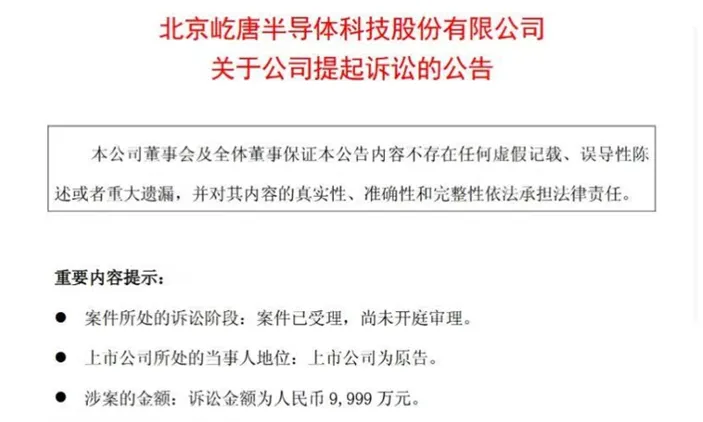Beijing E-Town Sues US Firm Over Alleged Trade Secrets Leak

Beijing E-Town Semiconductor Technology Co, based in Beijing, has filed a lawsuit against the US firm Applied Materials Inc, alleging theft of trade secrets that could have significant implications for US-China trade relations and the semiconductor sector.
The lawsuit claims that Applied Materials unlawfully acquired and utilized E-Town's proprietary technology related to plasma sources and wafer surface treatment, subsequently applying for patents in the Chinese market based on this information, as outlined in E-Town's filing with the Shanghai Stock Exchange.
In pursuit of justice, E-Town has initiated legal proceedings at the Beijing Intellectual Property Court, seeking compensation amounting to 99.99 million yuan, equivalent to approximately 13.94 million USD. Although the case has been officially registered, it is important to note that the trial has yet to begin.
According to E-Town, the ongoing lawsuit is not expected to have a substantial negative effect on the company’s operations or its regular production activities. They indicated that the ultimate impact of the case would depend on the outcome of the court ruling.
Currently, Applied Materials has not offered a public response to these serious allegations. The case hinges on claims that Applied Materials employed two former employees of Mattson Technology Inc, previously a subsidiary of E-Town, who are believed to have insider knowledge of critical technological processes.
The specific technology under dispute is the use of high-concentration, stable, and uniform plasma for wafer surface treatment, a key aspect of E-Town's semiconductor processing equipment utilized in various applications such as dry stripping and dry etching.
Each of the hired former employees from Mattson possesses extensive knowledge of plasma generation and treatment methodologies, making them vital to understanding technical frameworks specific to E-Town's technology.
Documentation indicates that, following their employment at Applied Materials, these individuals were key inventors on a patent application submitted to the China National Intellectual Property Administration, which involved the contested technology.
This sequence of events posits a significant violation of China's fair competition laws and an infringement of E-Town's trade secrets. As such, the Beijing court has formally accepted the civil case, although no court hearings have been convened as of this point.
Founded in 2015, Beijing E-Town has established itself as a key player in the development and supply of wafer processing equipment critical to integrated circuit manufacturing. The company's listing on the Science and Technology Innovation Board of the Shanghai Stock Exchange on July 8, 2025, underscores its growth and industry significance.
Overall, the outcome of this lawsuit may not only affect the parties involved but could also send ripples through the semiconductor industry and broader US-China trade relations.
Read These Next

Mining Truck Market Thrives on Electrification Automation Trends
The mining truck sector thrives on electrification, automation, and Chinese expansion, boosting R&D and attracting investors.

Victory Securities' Strategic Shift in Corporate Communication
Victory Securities (Holdings) Company Limited is shifting its corporate communication strategy to enhance accessibility for shareholders, particularly through electronic distribution of reports. However, the lack of detailed financial data raises concerns regarding transparency, while risks associated with non-registered shareholders potentially missing critical updates underscore the importance of effective communication strategies. The firm must ensure that both its communication policies and the information conveyed support investor confidence and engagement in an increasingly digital marketplace.

AI's Impact on Labor: A Double-Edged Sword
This commentary analyzes the implications of artificial intelligence on labor markets based on the recent article discussing how major U.S. companies are leveraging AI to enhance productivity while reducing workforce requirements. It examines macroeconomic trends, corporate strategies, and the long-term impact of these changes on employment.
